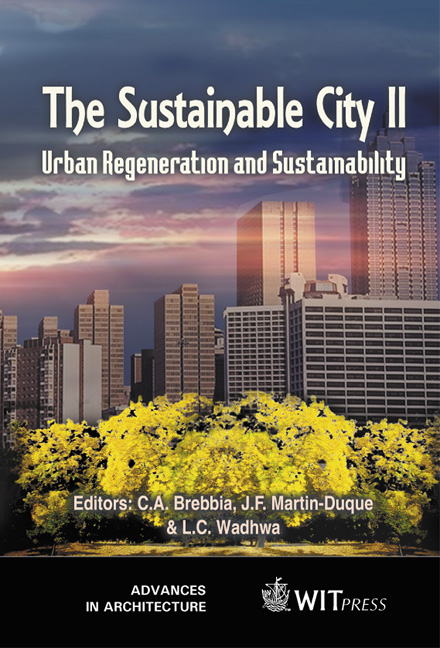Urban Densification – A Sustainable Urban Policy?
Price
Free (open access)
Transaction
Volume
54
Pages
Published
2002
Size
688 kb
Paper DOI
10.2495/URS020491
Copyright
WIT Press
Author(s)
A Skovbro
Abstract
Urban densification - a sustainable urban policy? A. Skovbro Danish Centre for Forest, Landscape and Planning, Department of urban and regional planning, Denmark Abstract Planning policies in many European countries advocate for the Compact City or some sort of compaction process, as a strategy to obtain a more sustainable urban development. It contrasts the car-oriented urban sprawl of many modern cities, creating longer distances between urban functions, poor access to facilities and services, less efficient infrastructure provision, loss of open land, social segregation, etc. A Compact City policy in contrast should by regeneration and densification of the urban area create the opposite, thus contributing to a more sustainable development in its broadest sense, social, economic and environmental. This paper explores the implications of urban densification. Based on a case study of a Copenhagen district, the paper will show the pros and cons of urban densification and the impacts on the urban environment, focussing on the local urban environment. The casestudy will be used to conclude whether densification and compact city policies can lead to a more sustainable urban environment. 1 Towards higher densities and sustainability in the 1990s Danish national government has supported a sort of densification policy since the mid1990s. The turn in the 1990s towards higher densities in urban areas was happening due to several circumstances. The believe was that higher densities would assist in achieving sustainable urban development thus addressing the challenges of the Brundtland report from 1988. By creating higher densities it would be possible to support efficient infrastructure, create shorter distances between urban functions and thus all in all improve the energy efficiency of the
Keywords





